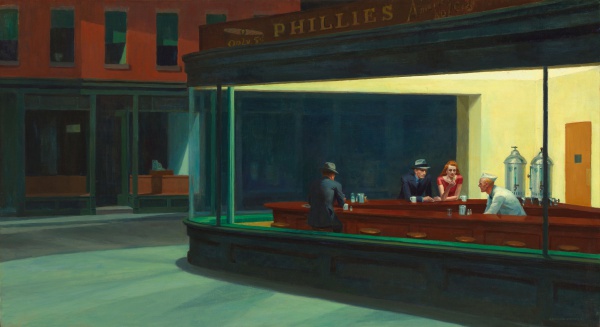Facts About Nighthawks
"Nighthawks" is one of Edward Hopper's most renowned paintings, completed in 1942. This oil on canvas masterpiece portrays a late-night scene in a downtown diner, viewed through a large window. It is celebrated for its depiction of urban isolation and its striking use of light and shadow. Hopper initially planned to name it "Night Hawks" and finished the painting on January 21, 1942. His wife, Josephine, maintained detailed notes on the artwork, offering insights into its composition and potential inspirations.
In May 1942, the Art Institute of Chicago purchased "Nighthawks" for $3,000. Many believe the diner that inspired Hopper was located in Greenwich Village, though its exact location remains debated. Over the years, "Nighthawks" has inspired countless homages, parodies, and reinterpretations across various forms of media, including literature, film, music, and theater. The diner scene has been recreated and reimagined in numerous artistic mediums, underscoring its lasting impact on contemporary art and culture.
The painting's influence is particularly notable in film noir, where its atmospheric qualities have resonated with filmmakers. Movies like "Blade Runner" and "Glengarry Glen Ross" feature nods to "Nighthawks" showcasing its enduring influence on cinematic style. Beyond film, the painting has inspired music, theater, opera, and television, all drawn to Hopper's poignant portrayal of urban loneliness. Its cultural significance is further evidenced by the many parodies and references it has spawned, affirming that "Nighthawks" remains a powerful and enduring piece of art.

 Canada
Canada